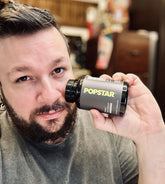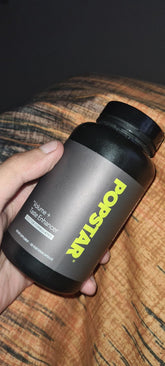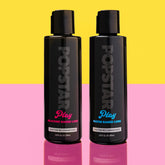This article offers a comprehensive, educational, and non‑graphic exploration of the bandana code, focusing on its history, cultural context, and relevance within men’s sexual health, communication, and identity.
Table of Contents
- What Is the Bandana Code?
- Key Takeaways
- Bandana Code History
- Bandana Code Meaning and Usage
- Bandana Code Colors
- Quick Facts Table
- Why the Bandana Code Matters in Men’s Sexual Health
- Potential Benefits
- Potential Risks and Downsides
- Safety, Consent, and Communication
- Interaction with Medical or Psychological Conditions
- When to Seek Professional Help
- Myths vs. Facts
- Frequently Asked Questions About the Bandana Code
- References and Further Reading
- Disclaimer
What Is the Bandana Code?
The bandana code, also called the hanky code or handkerchief code, is a color‑based signaling system historically used within gay and queer subcultures. Individuals place a colored bandana in a left or right pocket to communicate interests, boundaries, or roles.
Key Takeaways
- The bandana code is a nonverbal communication system developed within gay communities.
- It uses colors and pocket placement to signal preferences or interests.
- It helps some men communicate boundaries and expectations more clearly.
- It is optional, not a requirement for identity or participation in queer spaces.
- Modern usage varies widely; many men know of the code but do not use it.
- It carries cultural, historical, and social meaning beyond sexuality.
- It can reduce misunderstanding when used respectfully.
- Knowledge of the bandana code supports safety, consent, and open communication.
- Color meanings can differ by region or generation.
- It is not an invitation for unwanted contact or pressure.
Bandana Code History
The bandana code originated in queer communities in the United States, especially among gay men in urban centers. It grew during the 1970s as a practical way to communicate interests without verbal discussion, particularly when safety, stigma, or discrimination made open conversations challenging.
Bandana Code Meaning and Usage
The bandana code meaning depends on two factors:
Color
Different colors represent different interests or themes.
Placement
- Left side traditionally indicates a more active or leading role.
- Right side traditionally indicates a more receptive or following role.
Modern use is flexible, and many men use it symbolically rather than literally.
Bandana Code Colors
Below is a general overview for educational purposes only. Meanings vary strongly by community and should not be assumed universal.
Common themes include:
- Red
- Blue
- Black
- Green
- Yellow
- Grey
- White
- Orange
- Purple
These colors historically corresponded to different interests or dynamics. Whether or not a man uses this system, knowing the bandana color code can support cultural literacy within LGBTQ+ history.
Quick Facts Table
| Category | Summary |
|---|---|
| Also called | Hanky code, handkerchief code |
| Purpose | Nonverbal communication of interests or boundaries |
| Origin | Gay subcultures, 1970s USA |
| Typical format | Color + pocket placement |
| Modern relevance | Cultural knowledge, identity expression |
| Risks | Miscommunication, assumptions |
| Benefits | Clarifying boundaries, historical awareness |
Why the Bandana Code Matters in Men’s Sexual Health
- Supports clearer communication.
- Helps men discuss boundaries.
- Reduces risk of misunderstanding.
- Offers historical context for modern attitudes about consent.
- Can empower men who struggle with verbal communication.
Potential Benefits
- Enhances clarity in social settings.
- Helps reduce anxiety about expressing preferences.
- Strengthens cultural connection and identity.
- Encourages conversations about boundaries and respect.
Potential Risks and Downsides
- Outdated color assumptions may lead to confusion.
- Not everyone interprets the code the same way.
- Visible markers may expose someone to stigma in certain environments.
Safety, Consent, and Communication
- Always ask before assuming intent based on a bandana.
- Use the code as a conversation starter, not a guarantee.
- Respect boundaries regardless of signals.
- Avoid pressuring someone to adopt or display a color.
Interaction with Medical or Psychological Conditions
- Anxiety disorders may affect how someone uses or interprets signals.
- Past trauma may influence comfort with public markers.
- Body‑focused conditions or chronic illnesses may change preferences.
When to Seek Professional Help
- If communication about interests becomes stressful or conflict‑heavy.
- If identity expression causes distress.
- If anxiety or shame interferes with relationships.
- If past trauma is triggered by discussions of roles or boundaries.
Myths vs. Facts
| Myth | Fact |
|---|---|
| Everyone uses the hanky code. | Many know it; fewer use it actively. |
| Colors mean the same everywhere. | Meanings vary widely. |
| Wearing a bandana signals consent. | Consent must always be explicit. |
| The code is only about sexuality. | It also holds cultural and historical meaning. |
Frequently Asked Questions About the Bandana Code
What does the bandana code mean in LGBTQ+ communities?
The bandana code is a color‑based system communicating interests or boundaries. It originated in gay communities where open discussion was risky.
Is the bandana code still used today?
Some people use it symbolically or socially, but active use is less common.
Is the bandana code only for gay men?
No. While rooted in gay history, others may use it as cultural expression.
What is the difference between the bandana code and the hanky code?
They are the same system with different names.
Can bandana code colors vary by location?
Yes. Interpretations differ by region, generation, and community.
Is wearing a bandana a sign of consent?
No. Bandanas do not replace verbal consent.
How do men talk to partners about the code?
Use open, low‑pressure conversation like: "I learned about the bandana code—have you heard of it?"
Are there safety risks with using the bandana code?
The main risk is miscommunication. Always confirm meaning verbally.
Can the bandana code affect relationships?
It can support communication, but misunderstandings may cause conflict.
Is the bandana code appropriate in public?
This depends on regional norms and personal safety considerations.
Can the code help men express boundaries more clearly?
Yes. It can make difficult topics easier to approach.
Does the code apply to online interactions?
Some individuals use bandana colors symbolically in profiles.
Can using the bandana code cause anxiety?
Possibly, especially if someone fears judgment.
Should beginners rely on online bandana code charts?
Charts can help, but meanings differ. Conversations are more reliable.
What should I do if someone misinterprets my bandana?
Clarify kindly and set boundaries.
When should I seek a therapist regarding identity or communication issues?
If confusion, shame, or conflict becomes persistent.
References and Further Reading
- LGBTQ+ educational nonprofits
- Reputable sexual health organizations
- National health service guidance on sexual communication
- Professional associations for sexual health and psychology
- Peer‑reviewed literature on LGBTQ+ identity and communication
Disclaimer
This article is for educational purposes only and does not constitute medical or mental health advice. Consult a qualified professional for personalized guidance.




















































